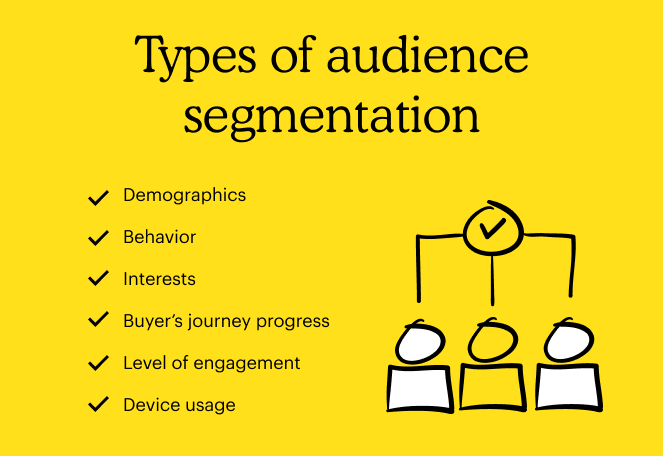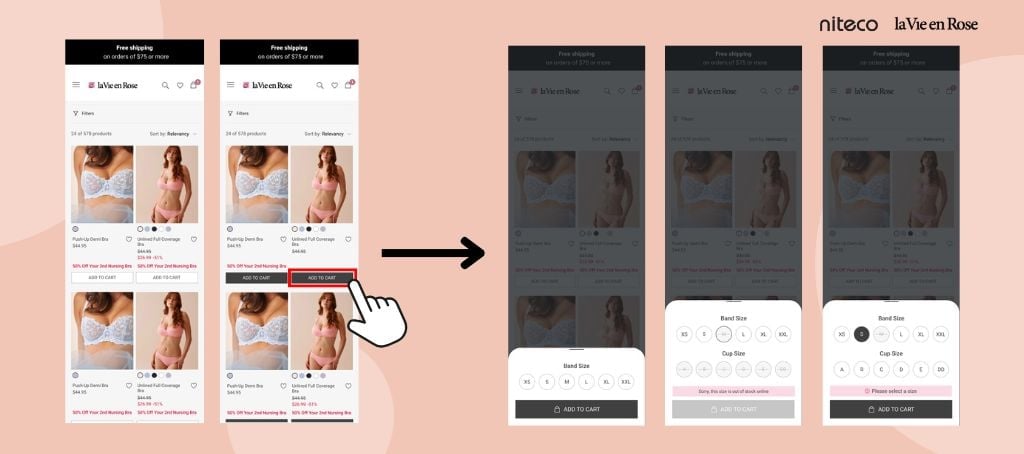Are you driving traffic to your website, but struggling to turn visitors into loyal customers? Many businesses face the challenge of a leaky bucket: attracting potential leads only to see them drop off before making a purchase or signing up for a service. It’s a common pain point, and it highlights a critical area for improvement: optimizing the entire customer journey, not just individual touchpoints.
This is where this article becomes handy. Dive into our guide to explore how effective conversion funnel optimization can enhance the entire customer journey funnel, leading to sustainable business growth. All backed from hands-on experience with big global brands in the last 15 years.
Why customer journey optimization?
What exactly is the customer journey funnel, and why is optimizing it so crucial? At its core, customer journey optimization is the strategic process of continually enhancing every stage of a user's interaction with your brand. This includes everything from their initial discovery of your product or service right through to their conversion and even post-purchase engagement. It’s a holistic approach that goes far beyond just improving user experience (UX) design or making your website aesthetically pleasing.
Instead of relying on a generic, one-size-fits-all sales funnel, effective customer journey optimization focuses on creating a personalized, behavior-driven path for each individual user.
In other words, conversion funnel optimization turns your customer journey into a strategic growth engine. It bridges the gap between traffic and ROI and ensures no valuable lead slips through the cracks.
10 practical tips to optimize your conversion funnel
Here are 10 actionable strategies designed to help you create a seamless customer conversion funnel that drives both engagement and revenue. These tips come straight from our certified experimentation strategists who’ve optimized funnels for global brands and seen what actually works at scale:
1. Map and define your funnel stages
One of the most important steps in conversion funnel optimization is mapping out your entire customer journey funnel, from the first click to final conversion.
Start by outlining each stage of the funnel:
- Awareness: How do users discover your brand?
- Consideration: What makes them explore your offering?
- Decision: What drives them to finally convert?
Seeing the journey through your customer’s eyes helps you uncover friction points you might otherwise miss. Use funnel tools like GA4 or Hotjar to visualize drop-offs. Are users bouncing after reading a landing page? Abandoning forms halfway through?
Once you spot these gaps, you can adjust your content, UX, and CTAs to better match user intent, you can guide them naturally from stage to stage.
Check out top CRO tools to maximize your conversion rate optimization effort.
2. Set clear goals and track key events
Every stage in your funnel should have a job to do. Whether it’s getting someone to sign up, view a product, or request a demo, these actions need to be clearly defined and tied to measurable KPIs.
Use tools like GA4, Mixpanel, or Usermaven to track meaningful user behavior - scroll depth, CTA clicks, video plays - so you can go beyond surface-level metrics. But tracking only works when it’s clean, so make sure your events are tagged consistently across platforms and pages.
When your goals are clear and your data is solid, you can actually see what’s working, what’s stalling, and what needs fixing.
3. Segment audiences based on behavior and intent
Effective customer conversion funnel optimization means moving beyond a one-size-fits-all approach. Businesses should create distinct funnel paths tailored to different user groups, recognizing that a new visitor's needs often differ significantly from a returning customer's. This involves adjusting messaging, offers, and follow-up strategies based on these specific user segments.

Types of audience segmentation (source image: intuit mailchimp)
By understanding behavioral patterns, such as which pages they visited, what products they viewed, or how they initially arrived on your site, you can refine your targeting strategies for maximum impact. This personalized approach ensures more relevant interactions, which ultimately leads to higher conversion rates and a more efficient Commerce conversion funnel.
4. Use behavioral analytics to uncover drop-off points
If people are dropping off before they convert, behavioral analytics will show you why. Heatmaps, session recordings, and click paths give you a window into how users interact with your site: what they click, where they hesitate, and what’s causing them to leave.
Look for red flags like high bounce rates, abandoned forms, or users clicking on non-functional elements. These patterns point to friction that needs your attention.
Instead of guessing, you get clear insights into where the journey breaks down, so you can fix the right things and improve conversions where it matters most.
5. Optimize forms and conversion points
To maximize your conversion funnel optimization, it's essential to streamline all forms and conversion points. Begin by reducing form fields to only the absolute essentials; every unnecessary field adds friction and can deter completion. Enhance the user experience with features like inline validation, which provides immediate feedback on input errors, and autofill functionalities, which save users time and effort.
Most importantly, ensure your Calls-to-Action (CTAs) are clearly visible, compelling, and action-oriented. They should stand out and tell the user exactly what to do next, removing any guesswork from the conversion process and guiding them smoothly through the customer journey funnel.
6. Run A/B and multivariate tests regularly
One of the most effective ways to improve your funnel performance is by testing what works, not guessing. A/B and multivariate testing allow you to compare variations of a page element, like a headline, CTA placement, or visual layout to see which one actually drives better results.
Start with pages that already get significant traffic. These offer the fastest and most reliable feedback, helping you gather statistically valid insights without waiting weeks. Make sure to test one variable at a time, whether it's a headline or button copy, and keep a clear control version in place to measure against.
Consistent testing builds momentum. Over time, small improvements stack up and lead to big gains in conversion rates. If you’re looking for a place to start, take a look at this guide to the best A/B testing tools we’ve used with our clients.
7. Improve mobile speed and usability
As mobile traffic continues to dominate, your funnel needs to perform flawlessly on smaller screens. A mobile-first design ensures that users can move through the experience without frustration, from their first tap to final conversion. Buttons should be easy to reach, forms must be simple to complete, and layouts should adapt naturally to any screen size. If you're not sure where to begin, this guide to mobile-first design is a solid starting point.
Speed also plays a critical role. Aim for pages that load in under 3 seconds, especially for mobile users who are less patient with delays. Audit your site for unnecessary scripts, oversized media files, or plugins that drag down performance. Every second of delay increases the risk of abandonment, which means every improvement to speed and usability directly supports a smoother, higher-converting journey.
8. Strengthen CTAs throughout the funnel
A call-to-action isn’t just a button, it’s a critical moment where curiosity turns into commitment. To make that moment count, your CTA language should clearly reflect the value the user gets. Instead of vague prompts like “Submit” or “Learn More,” use benefit-focused phrasing that answers the user’s unspoken question: “What’s in it for me?”
CTAs should be present throughout the funnel, not just waiting at the bottom of a page. Place them where users naturally look for the next step - after reading key product benefits, watching a demo, or finishing a blog post. These are moments of high intent, and the CTA should feel like a logical next move.
In the right context, urgency can give users the final nudge. Whether it’s “Only a few spots left” or “Offer ends tonight,” a bit of scarcity can encourage users to act now instead of later, or not at all.
9. Simplify the checkout or lead capture process
The fewer steps it takes to convert, the better your chances. Whether it's a checkout flow or a lead capture form, simplicity is what keeps users from bailing at the last minute. Stick to a linear process that moves step by step, especially on mobile where complexity often leads to abandonment.
Make it easy for users to see where they are and what’s left with clear progress indicators. If they leave and come back, saved cart or session data helps them pick up right where they left off without friction. These small touches show you value their time.
And not everyone wants to create an account just to complete an action. Offering guest checkout or quick signup through social logins gives users the flexibility they expect and removes another layer of resistance right at the finish line.
10. Retarget funnel drop-offs with relevant messaging
Not every user converts on the first visit and that’s okay. What matters is how you bring them back. By setting up retargeting campaigns that match the exact point where users dropped off, you can re-enter the conversation with context and relevance.
If someone left after viewing a product page, show them a dynamic ad featuring that product. If they abandoned a form, follow up with a reminder or incentive via email. Personalized messaging isn’t just nice to have, it’s what makes retargeting work.
The channels you use matter too. Email, social media, and push notifications all offer different ways to stay top of mind without being intrusive. The goal is to make coming back feel effortless, not forced. When the message fits the moment, users are far more likely to complete what they started.
How Niteco delivered measurable funnel optimization results
When la Vie en Rose partnered with Niteco, they weren’t just looking for a new design, they needed to close the gap between traffic and conversions. Mobile users made up the majority of their site traffic, but their customer journey funnel was falling short, especially compared to desktop performance.
We started by rebuilding their tracking infrastructure to gain full visibility into user behavior across the funnel. This unlocked key insights, including missed conversion opportunities on mobile product listing pages. From there, we optimized critical touchpoints: enhancing mobile Quick View functionality, adding sticky Add-to-Cart buttons, and improving performance speed to reduce friction.

Add-to-Cart button on la Vie en Rose's PDP sticky to increase ATC rates
After testing and rollout, mobile add-to-cart actions rose by 14%, and overall sitewide add-to-cart rates improved by 4.3% year-over-year. By focusing on data-backed funnel improvements, we helped turn a leaky journey into a conversion-driving experience.
Conclusion: Optimize your conversion funnel with specific strategies
With the right approach to conversion funnel optimization, you create a more predictable path to growth. Your customer journey funnel becomes smoother, more intentional, and far more effective - boosting both user experience and ROI.
If you’re ready to uncover what’s holding your funnel back and turn missed opportunities into measurable wins, contact us to transform your funnel into a growth engine that actually delivers!
